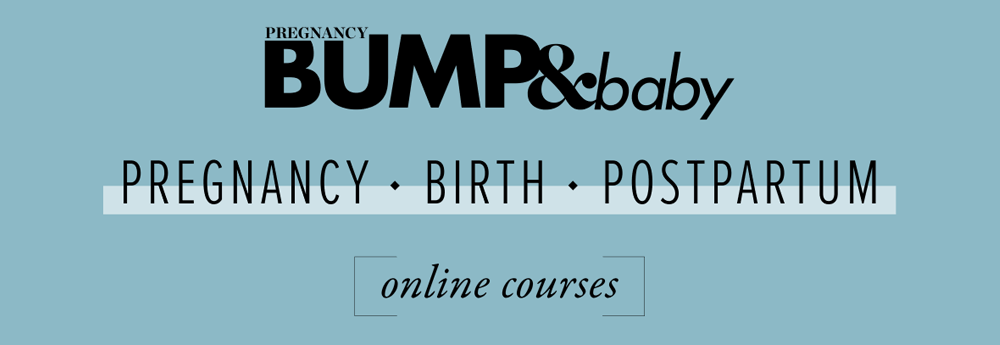
Has your baby developed a sleep issue that you’re not entirely certain how to solve? Check out these common sleep scenarios and our suggestions for sorting them out.
Caution:
Until your baby is about six months of age, his or her sleep pattern will be all over the place, so you shouldn’t try to implement any of these strategies until your baby is older than six months, or under the supervision of your midwife, GP, Plunket nurse, or another qualified health professional.
The car seat sleeper
Sleep scenario: Your baby will fall asleep in his car seat, but won’t stay asleep when you try to transfer her from the car seat into the house, and then won’t have a proper nap when she needs it.
What’s going on: Babies who fall asleep on short car rides are probably not getting enough sleep, as they’re busy and curious, and easily stimulated.
Baby skill check: Your baby needs to be able to fall asleep in a stationery spot such as his cot, without the stimulation of a moving vehicle and interesting scenery.
Making the change: First, check that you’re not missing your baby’s sleep cues, such as rubbing her eyes or pulling on her ears, fussing, acting clingy, yawning, or having seemingly sudden mood swings. Second, are you planning your outings, such as school pickup or supermarket shopping, too close to your baby’s naptime? If you can adjust your schedule around your baby’s natural tired times, then try this, as it might help – if you can’t reschedule your errands, then you’ll need to work on rescheduling your baby’s sleep time (which isn’t easy, but can be done). It’s not ideal to let your baby sleep for a long time in the car seat, because when babies sleep in a semi-reclined position like in a car seat, their chins fall onto their chests and their airway becomes more obstructed. However, if your baby is asleep in her car seat and you absolutely can’t adjust her sleep schedule, then sit with her in the car while she sleeps – read a book or the news on your phone and wait for her to wake up. Note: This is really only a temporary option as it’s not safe in the long-term, but might give you some leeway until your baby’s naptimes change (as they inevitably will as your baby grows older).
The cat napper
Sleep scenario: Your baby goes down for a nap easily, but wakes up after 20 or 30 minutes, seemingly ready to play.
What’s going on: Just like adults, babies go through sleep cycles, and they may wake up when they’re going between different stages of sleep. Also, when they get overtired, it can be hard for them to fall asleep and stay asleep.
Baby skill check: Your baby needs to be able to wake up and fall back asleep – self soothing is important here. And there’s a parent skill that needs to be mastered here, too – to realise that your baby isn’t actually ready to get up, but needs to be encouraged to fall back asleep.
Making the change: First, it’s important to establish healthy nighttime sleep habits. Does your baby fall asleep well and can she soothe herself back to sleep? Get the nights sorted out, and then you can work on those daytime naps. Second, ensure that her sleep environment is conducive to sleep. A good temperature (neither too hot nor too cold), adequate blankets, sleep associations like white noise or a sleeping bag – these are all important for naps as well as nighttime sleeps, so try to create a similar daytime nap environment. And lastly, most babies need to go down for a nap about two or three hours after they first wake up in the morning, so make sure you’re not waiting too long to put your baby down for a nap.
The resister
Sleep scenario: Your baby used to take two regular naps during the day, but now he won’t go down for one or both naps.
What’s going on: Life is exciting when you’re a baby, and there’s so much to do, see, and experience. Babies get overstimulated with all of the interesting stuff in their world, and they can act like they’re not tired when really, they’re actually overtired and really need that nap they’re resisting.
Baby skill check: Over 90% of all one-year-olds take two naps a day, but by about the age of 15 months, 20% of them drop their morning nap.
Making the change: Observe your baby at around 4-5pm – if he’s in a good mood and playing happily, he’s likely well-rested, but if he’s fussy and grizzly, then he probably still needs two naps a day and is overtired from dropping one of those. If you determine that your baby does, in fact, still need those two naps, then it’s a matter of trial-and-error to find the ideal time to put him down for his naps. Again, most babies need to go down for their first nap about two hours after first waking up in the morning. Try to get that nap sorted first, and then work on the second nap. Run your errands and have outings when your baby is naturally awake, and when you’re home, go into nap-preparation mode.
The rock star
Sleep scenario: Your baby is used to being rocked to sleep, and can’t lay down in his cot and fall asleep on his own.
What’s going on: Your baby associates sleeping with being rocked in your arms, listening to your heartbeat and possibly the gentle creak of the rockers. In the womb, your baby got used to falling asleep with “white noise” like your heartbeat, your blood rushing, and the muted noises from the outside world, not to mention the gentle swaying of your body. Falling asleep while being rocked in your arms is like the womb, so no wonder your baby is comfortable.
Baby skill check: For your baby to be able to transition from falling asleep in your arms while rocking, to falling asleep on his own in his cot, he’ll need to master two skills: The ability to fall asleep in another location other than your arms, and the ability to fall asleep without being rocked.
Making the change: It takes time to change any long-held habit, especially one that’s soothing and comforting, like being rocked to sleep. One thing to try is to help your baby develop a new sleep association, such as playing a white noise CD, putting him to bed with a doll that has a heartbeat sound, or using a baby sleeping bag to help him feel warm and secure. Use the new sleep association for a week while you’re still rocking your baby to sleep, then gradually reduce the amount of time you’re rocking him for while increasing the amount of time he’s in his bed. You might need to try rocking him, placing him in his bed, then picking him up and rocking him again when he fusses – but over time, the idea is that he will become more comfortable with being put to sleep in his bed when he’s still awake but sleepy, and ready to fall asleep with his new sleep associations present.
The dummy obsessive
Sleep scenario: Your baby loses her dummy again and again, and wakes up every time, unsettled and upset – so she doesn’t sleep well all night.
What’s going on: Babies are soothed by sucking, which is very natural and normal, and a dummy can become a strong sleep association.
Baby skill check: Your baby needs to have the ability and skills to put her dummy back in her mouth on her own, which doesn’t develop until around the age of eight months. Or your baby needs to be able to fall asleep without the dummy.
Making the change: You have two choices here: Either wean your baby off her dummy, or be prepared to do the dummy-replacing dance all night long until your baby develops the skills to pop her dummy back into her mouth on her own. Experts say that using a dummy at night can reduce the risk of sudden unexpected death of an infant (SUDI) during the first year of your baby’s life, so it’s okay if you want to let your baby have a dummy when she sleeps. If you choose to wean your baby off her dummy, you might try replacing it with another sleep association, such as white noise or a cuddly – but be sure it’s age-appropriate (young babies should never have soft toys or extraneous blankets in the cot).
Variation: The milkaholic
If you have a baby who can’t go to sleep without her bottle or being breastfed to sleep, this is quite normal. It becomes a problem when the only way you can get her back to sleep is by giving her a bottle or breast. Instead, try putting your baby back down while she’s still sleepy but awake, and check on her every couple of minutes until she falls asleep. 90% of six-month-old babies can sleep through the night without needing to be fed, so once your Plunket nurse says it’s okay to stop feeding at night, slowly reduce your baby’s nighttime feeds.
How much sleep does my baby need at night?
During your baby’s first year, her sleep needs will change several times. Here’s a guide to how much sleep you can expect your baby to get overnight.
- 1 week: 8 hours. Babies can sleep 16 to 18 hours a day, and half takes place at night.
- 6 weeks: 8.5 hours. You’ll start to see a pattern to her nighttime sleeping and waking for feeding.
- 3 months: 9 hours. A sleep schedule will become more apparent. Start the bedtime routine earlier.
- 6 months: 10 hours. This is a good time to ensure you have a clear bedtime routine in place.
- 9 months: 11 hours. She may try to fool you into thinking she doesn’t need as much sleep, but she does.
- 12 months: 12 hours. If your baby is still not sleeping well by age one, talk to your GP or Plunket nurse.
BUMP&baby
BUMP & baby is New Zealand’s only magazine for pregnancy and early babyhood. Our team of mums and mums-to-be understand what it’s like to be pregnant in this connected age, and that’s why BUMP & Baby online is geared toward what pregnant women and new mums really want to know.
Other articles of interest
How to improve your digestion, bowel health and regularity
The tips for success listed below make a massive difference to the state of your bowels. Your bowel health then influences your metabolism, your energy levels, your skin, your digestion, your weight, your ageing and your potential longevity.
The importance of joint attention
Joint attention is important in terms of communication skills and is a main focus of development for infants between 8 and 12 months of age.







